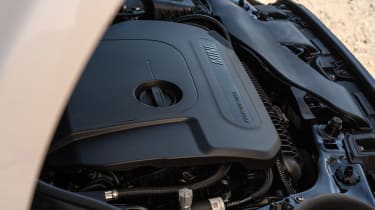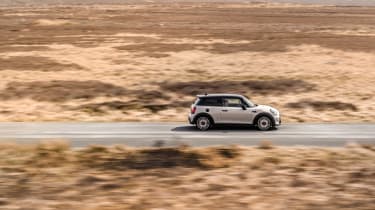Mini Cooper S review – engine, gearbox and technical specs
2-litre four-cylinder engines are larger than the class norm, but deliver good power and torque through six-speed manual and seven-speed DCT gearboxes
While 1.6-litre (and more recently 1.5-litre) engines have become the norm for hot hatch superminis, and indeed formed the basis of the last two generations of Cooper S, the F56 model instead used a 2-litre unit.
Naturally, this was an economies of scale choice as much as it was to boost performance – the 2-litre, four-cylinder ‘B48’ power plant is used widely throughout the BMW empire in various states of tune, from this Mini through various 3-series and, amusingly, the four-cylinder variant of the Toyota Supra. It also continues to serve in today’s fourth-generation petrol-powered Mini Cooper S.
But it does mean extracting the S’s 189bhp output at 4700rpm is no great hardship when there are 302bhp variants floating around the group. Likewise, the larger unit is good for torque; 221lb ft of it, from a low 1250rpm, and while a 1205kg kerb weight is towards the upper end of this class, it’s not enough to hold the car back too badly.
Two transmissions, a six-speed manual and a seven-speed dual-clutch, were available. Both drive the front wheels alone, and the latter naturally offers paddles behind the steering wheel. The behaviour of the engine, and in the auto’s case, the engine and transmission, is adjusted depending on the driving mode selected – the Cooper S has Green, Mid, and Sport options, with a corresponding change in throttle response and gearshift behaviour.





